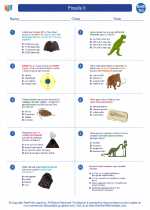Morphological Adaptation
Morphological adaptation refers to the physical features and structures of an organism that have evolved over time to help it survive and thrive in its environment. These adaptations can be related to body shape, size, coloration, and other physical characteristics.
Examples of Morphological Adaptations
1. Camouflage: Some animals have evolved coloration and patterns that help them blend into their surroundings, making it easier for them to evade predators or sneak up on prey.
2. Beak shape in birds: Different bird species have evolved beak shapes that are adapted to their specific feeding habits. For example, the long, slender beak of a hummingbird is suited for feeding on nectar, while the hooked beak of a raptor is designed for catching and tearing prey.
3. Body size and shape in aquatic animals: Many aquatic animals have streamlined bodies and fins that allow them to move efficiently through water, reducing drag and conserving energy.
Study Guide
- Define morphological adaptation and provide examples of different types of morphological adaptations.
- Explain how morphological adaptations help organisms survive and thrive in their environments.
- Discuss the process of natural selection and how it leads to the development of morphological adaptations.
- Compare and contrast the morphological adaptations of two different species and explain how these adaptations are suited to their respective environments.
- Research and present a case study of a specific organism and its morphological adaptations, including how these adaptations have contributed to its survival.



